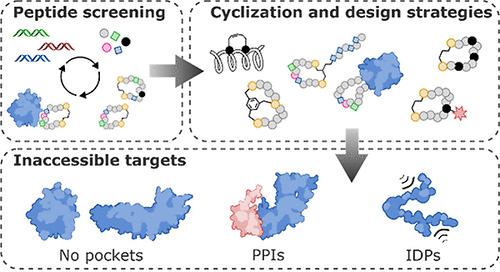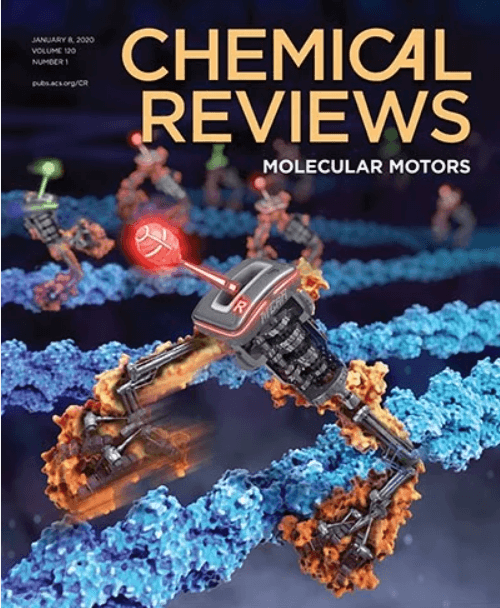Selection of Nucleotide-Encoded Mass Libraries of Macrocyclic Peptides for Inaccessible Drug Targets
IF 51.4
1区 化学
Q1 CHEMISTRY, MULTIDISCIPLINARY
引用次数: 0
Abstract
Technological advances and breakthrough developments in the pharmaceutical field are knocking at the door of the “undruggable” fortress with increasing insistence. Notably, the 21st century has seen the emergence of macrocyclic compounds, among which cyclic peptides are of particular interest. This new class of potential drug candidates occupies the vast chemical space between classic small-molecule drugs and larger protein-based therapeutics, such as antibodies. As research advances toward clinical targets that have long been considered inaccessible, macrocyclic peptides are well-suited to tackle these challenges in a post-rule of 5 pharmaceutical landscape. Facilitating their discovery is an arsenal of high-throughput screening methods that exploit massive randomized libraries of genetically encoded compounds. These techniques benefit from the incorporation of non-natural moieties, such as non- proteinogenic amino acids or stabilizing hydrocarbon staples. Exploiting these features for the strategic architectural design of macrocyclic peptides has the potential to tackle challenging targets such as protein–protein interactions, which have long resisted research efforts. This Review summarizes the basic principles and recent developments of the main high-throughput techniques for the discovery of macrocyclic peptides and focuses on their specific deployment for targeting undruggable space. A particular focus is placed on the development of new design guidelines and principles for the cyclization and structural stabilization of cyclic peptides and the resulting success stories achieved against well-known inaccessible drug targets.

选择核苷酸编码的大环肽质量库,寻找难以获得的药物靶点
制药领域的技术进步和突破性发展,正在越来越顽强地叩响 "不可药用 "堡垒的大门。值得注意的是,21 世纪出现了大环化合物,其中环肽尤其引人关注。这一类新的潜在候选药物占据了介于传统小分子药物和大型蛋白质治疗药物(如抗体)之间的广阔化学空间。随着研究向长期以来一直被认为无法触及的临床靶点推进,大环肽非常适合在 "5规则 "之后的制药环境中应对这些挑战。高通量筛选方法利用了大量基因编码化合物的随机文库,为大环肽的发现提供了便利。这些技术得益于非天然分子的加入,如非蛋白质氨基酸或稳定碳氢化合物。利用这些特点对大环肽进行战略性结构设计,有可能解决蛋白质-蛋白质相互作用等具有挑战性的目标,这些目标长期以来一直是研究工作的难点。本综述总结了发现大环肽的主要高通量技术的基本原理和最新发展,并重点介绍了这些技术在靶向不可药用空间方面的具体应用。其中特别强调了环肽环化和结构稳定化的新设计指南和原则的发展,以及由此针对众所周知的无法进入的药物靶点所取得的成功案例。
本文章由计算机程序翻译,如有差异,请以英文原文为准。
求助全文
约1分钟内获得全文
求助全文
来源期刊

Chemical Reviews
化学-化学综合
CiteScore
106.00
自引率
1.10%
发文量
278
审稿时长
4.3 months
期刊介绍:
Chemical Reviews is a highly regarded and highest-ranked journal covering the general topic of chemistry. Its mission is to provide comprehensive, authoritative, critical, and readable reviews of important recent research in organic, inorganic, physical, analytical, theoretical, and biological chemistry.
Since 1985, Chemical Reviews has also published periodic thematic issues that focus on a single theme or direction of emerging research.
 求助内容:
求助内容: 应助结果提醒方式:
应助结果提醒方式:


